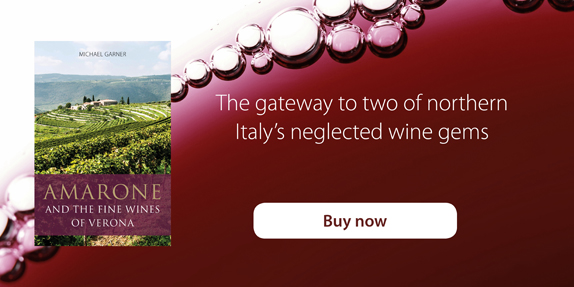Ageworthy and aspirational Veronese wines
15 December 2017 by Rebecca in Classic Wine Library, Wine and spirits
By Michael Garner, author of Amarone and the fine wines of Verona
At the height of their popularity in the 1970s and 1980s, Soave and Valpolicella were viewed as simply cheap and cheerful wines, a reputation founded on widely available ‘generic’ examples bought and sold on price alone and produced by the cooperatives and larger negoziante houses that dominated production at the time. Ironically this was also the period that saw the emergence of Pieropan and Quintarelli – today’s role models for the many smaller growers determined to set the record straight and present Soave and Valpolicella in a different light. An integral part of their strategy has been the focus on highlighting wines from the finest vineyards as a way of demonstrating the area’s true potential.
Pieropan’s Calvarino had its first bottling in 1971 and has gone on to redefine what Soave is all about. While much of today’s Soave favours the Garganega grape, Calvarino makes use of the maximum 30 per cent of Trebbiano di Soave the law allows in the blend and is fermented and aged in cement tanks only. Other unoaked styles of Soave which champion scintillating freshness and ‘purity’ also include Trebbiano di Soave – Coffele’s Ca Visco and Nardello’s Vigna Turbian – but a substantial number are pure varietals, such as Suavia’s Monte Carbonara, i Stefanini’s Monte Fico and Fornaro’s Capitel del Tenda. All use a period of extended lees contact for greater richness and substance, which partly explains one of their more surprising features, the fact that these wines are capable of not only lasting but even developing in bottle for a decade or more, when their beautifully defined fruit aromas and flavours take on preserved and candied notes without compromising that essential freshness and verve. Equally ageworthy are the more traditional wood-matured versions of Soave: before cement and then stainless steel was introduced into the area (less than one hundred years ago) the wines were routinely fermented in barrels. A few that maintain this tradition are rightly recognized as icons: Gini’s Salvarenza, Pieropan’s La Rocca and Inama’s two versions of Soave from vineyards on the renowned Foscarino hillside. On the whole botte is preferred to barrique these days. While all the above wines are produced in the Classico area, wonderful wood-aged Soave from the wider DOC area includes Roccolo Grassi’s La Broia or Corte Giacobbe’s Runcata (fermented and matured in acacia barrels).
A slightly longer tradition of single vineyard bottlings exists in Valpolicella (Masi for example record first bottling their ‘cru’ Amarone Camplongo di Torbe in 1958). Amarone aside, most of the single vineyard bottlings encountered on today’s market belong to the Superiore category. The highly flexible framework for production which stipulates little more than a minimum ageing period, a minimum alcohol content and lower yields than the vino d’annata style, allows winemakers free rein to express themselves. Some prefer to work with grapes that have undergone a shortened version of the appassimento process (Speri’s Monte Sant’Urbano, Mirko Sella’s Le Alene and the Cantina di Negrar’s Veriago are all made from 100 per cent semi-dried grapes), a mix of fresh and dried fruit (Masi’s Monte Piazzo) or entirely freshly-harvested, often later-picked grapes (Monte Dall’Ora’s Camporenzo or Corte Sant’Alda’s Mithas). Most spend at least 12 months in wood. Though this denomination is less familiar and much less widely available than either Vino d’Annata or Ripasso, some of the very finest red wines in the Veronese fall within this category. It has the added advantage of being much more of a food friendly wine than Amarone and can age beautifully. On the whole Superiore is a vastly more reliable wine than Ripasso, which is in grave danger of becoming as over-stretched as those cheap and cheerful wines from several decades ago, largely because of its recent runaway success. My tip: Valpolicella Superiore is the Veronese red to watch for the future! And on that bombshell …
Next time: Ripasso, Amarone and Recioto – wines derived from the appassimento process.

